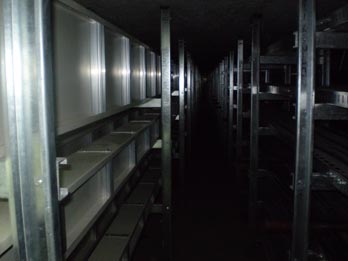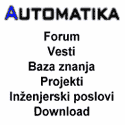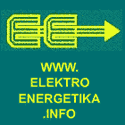Guide To Low Voltage Busbar Trunking Systems (1)
12,082 views

Guide To Low Voltage Busbar Trunking Systems
Modern electrical desdign and installations are often placing increasing demands on all products of the electrical equipment manufacturer.
Products must have:
• Reliable service life
• Adaptability to new requirements
• Low installation costs
• Low maintenance costs
• Inherent safety features
• Minimal purchase cost
• Energy efficiency
.
In today’s market one of the most important elements is cost effectiveness. In an electrical installation, one area where savings can be made and provide the features listed above is in the use of busbar trunking systems. Busbar trunking installations can be categorised into two basic types:
- Distribution
- Feeder
Distribution Feeder
This is the most common use of busbar trunking and is applied to distribute power over a predetermined area. Busbar trunking can be run vertically or horizontally, or a combination of both. Typical applications would be:
- Supply to large numbers of light fittings
- Power distribution around factories and offices
- Rising main in office blocks or apartment blocks to supply distribution boards serving individual floors.
Power is taken from busbar trunking by the use of tap off units which connect at defined positions along the busbar trunking, and allow power to be taken from the system, usually via a suitable protective device.
Advantages over cable:
- The contractor can achieve savings with respect to material i.e. cable trays and multiple fixings and also labour costs associated with multiple runs of cable.
- Reduced installation time since busbar trunking requires less fixings per metre run than cable.
- Multiple tap-off outlets allow flexibility to accommodate changes in power requirements subsequent to the initial installation (subject to the rating of the busbar trunking).
- Repositioning of distribution outlets is simpler
- System is easily extendable.
- Engineered product with proven performance.
- Type tested to recognised international and national standards.
- Aesthetically pleasing in areas of high visibility.
Feeder Trunking
When used for the interconnection between switchboards or switchboard and transformer, busbar trunking systems are more economical to use, particularly for the higher current ratings, where multiple single core cables are used to achieve the current rating and compliance with voltage drop and voltage dip requirements.
Beside this, bunch of cables are increasing possiblity of heating between cables and eventually short circuit.
.
Advantages over cable:
- Greater mechanical strength over long runs with minimal fixings resulting in shorter installation times.
- Replaces multiple runs of cable with their associated supporting metalwork.
- Easier to install compared to multiples of large cables with all of the associated handling problems.
- Less termination space required in switchboards.
- Type tested short circuit fault ratings.
- Takes up less overall space, bends and offsets can be installed in a much smaller area than the equivalent cable space.
- Cable jointer not required.
- Busbar trunking systems may be dismantled and re-used in other areas
- Busbar trunking systems provide a better resistance to the spread of fire.
- Voltage drop and voltage dip in the majority of cases is lower than the equivalent cable arrangement.

- Typical Busbar Layout
Tap-Off Units
Tap-off units are of two types, either plug-in or fixed. Plug-in units are designed to be accommodated at tap-off outlets at intervals along the distribution busbar trunking. Fixed tap-off outlets are engineered and positioned during manufacture to suit the specified installation. The tap-off unit usually contains the device providing protection to the outgoing circuit terminated at the unit to distribute power to the required load.
There are various types of protective devices, for example:
1. HRC fuses to BS EN 60269-1 (BS88)
2. Miniature Circuit Breakers to BS EN 60898
3. Moulded Case Circuit Breakers to BS EN 60947-2
HRC fuses may be incorporated into fuse combination units to BS EN 60947-3. The degree of enclosure protection of the tap-off unit is defined by BS EN 60529.
Each tap-off unit contains the necessary safety features for systems and personnel protection, as follows:
- Plug-in units are arranged to be non-reversible to ensure that they can only be connected to give the correct phase rotation.
- Plug-in units are arranged to connect the protective circuit before the live conductors during installation and disconnect the protective circuit after the live conductors while being removed.
- Where units are provided with a switch disconnector or circuit-breaker these are capable of being locked in the OFF position.
- Covers permitting access to live parts can only be removed by the use of a tool and will have any internally exposed live parts shielded to a minimum of IP2X or IPXXB in accordance with BS EN 60529.
- Outgoing connection is achieved by cable terminations in the unit or by socket outlets to BS EN 60309-2 or BS 1363.
Fire Stops
Recommendations for the construction of fire-stops and barriers where trunking penetrates walls and floors classified as fire barriers. Internally the trunking may or may not require fire-stop measures according to the construction; where they are required these will generally be factory-fitted by the manufacturer and positioned according to a schematic drawing for the installation. Compact or sandwich-type trunking does not require internal fire-barriers, as suitability as a fire-barrier is inherent in the design.
However in all cases verification of the performance of the trunking under fire conditions needs to be provided by the manufacturer.
The following information is provided for guidance, and the method used should be agreed with the trunking manufacturer. It is not the responsibility of the trunking manufacturer to provide the specification or detail the rating or construction of the fire-stop external to the trunking.
Protective Earth Condustor Sizes
The sealing external to the busbar trunking (with or without an internal fire barrier) will need to conform to applicable building regulations. This may require filling the aperture around the busbar trunking with material to maintain the same fire proofing as the wall or floor.
Careful consideration needs to be given to the access required to complete the fire- stop. It may be necessary to install sections of fire-stop at the stage of installation of the trunking if access afterwards is impossible e.g. trunking runs in close proximity.
The protective earth connection(s) to the busbar trunking system shall conform to Section 543-01 of BS 7671 (IEE Wiring Regulations Sixteenth Edition).
Low-Noise Earth Systems
A low-noise earth, commonly referred to as a ‘clean earth’, is typically specified when electronic apparatus supplied from the system is sensitive to spurious voltages arising on the system earth. This is particularly true with IT equipment, found in all commercial premises these days, where data processing functions can be corrupted.
The low-noise earth is provided by a conductor separated from the protective earth (PE) and from all extraneous earth paths throughout the distribution system.
Many busbar trunking systems provide a ‘clean earth’ conductor in addition to the three phase conductors plus neutral, using the case or an external conductor as PE.
Tap-off units must be specified as ‘clean earth’ for the circuits concerned since the separation of the earths must be maintained and an additional termination will be provided for the load circuit ‘clean earth’ conductor. Sizing of the ‘clean earth’ conductor is not specified in BS 7671 (IEE Wiring Regulations Sixteenth Edition) but the usual practice is to calculate the size in the same way as for the protective earth conductor.
Neutral Sizes/Harmonics
The designer of the electrical network specifies the size of the neutral conductor depending upon the network loading. Typically this tends to be a neutral conductor the same size as the phase conductors (i.e.100% neutral). As a minimum a 50% neutral may be specified.
The BS 7671 (IEE Wiring Regulations Sixteenth Edition) states “In a discharge lighting circuit and polyphase circuits where the harmonic content of the phase currents is greater than 10% of the fundamental current, the neutral conductor shall have a cross-sectional area not less than that of the phase conductor(s).”
With the increase of non-linear (almost anything electronic) single phase loads connected to a network, for example electronic ballasts in lighting fittings, or switch-mode power supplies (the type found in personal computers and servers) the total harmonic distortion is increased.
.
Related articles
- ABB Power Transformers – A guide to manufacturing
- Dry-Type disc wound transformers in MV applications
- Substation ventilation
- Arc-resistant low voltage switchgear
- Shielding Of Power Cables
Be nice and share this article with others! How to use all these nice buttons?
Posted by: ecsanyi on Saturday, April 17, 2010 at 10:22 pm
Tagged with: busbar trunking, busways, clontrolgear, distribution feeder, fire stops, guide, harmonics, Low Voltage, plug-in, protective earth, raising main, switchboard, tap-off, transformer





